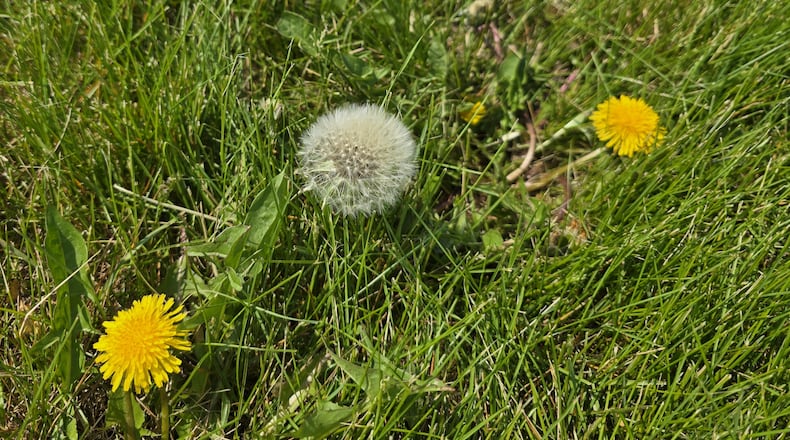Before those of you leaning to leave the dandelions’ side stop reading my column without learning more, hang on.
In terms of dandelions, the best time to control them is when they are in the puff ball or shoe fairy stage. (Shoe fairies are the name my grandson gave them years ago while walking through the yard, and I love it and continue to use it!).
This is when the plant absorbs the herbicide into the roots. Fall is another good time to control dandelions.
Early pollinators love dandelions, so leaving them is ok as well. Observe the flowers on a sunny day between 10 a.m. and 2 p.m. I saw lots of honeybees on the dandelions in the front yard during our Easter egg hunt last Sunday.
Seventeen years ago, when my husband and I were ready to plant grass on our new property, I asked him what color the lawn should be. He looked at me quite strangely (he does this often) and said, “Green, of course.”
At that time, I was okay with green, yellow, purple, white, and any other color in the lawn. I didn’t mind violets and clover because they were pretty and provided pollinator services.
Fast forward about five years, and I changed my mind. Once these pesky weeds started creeping into my perennial beds, I was not happy. Have you ever tried to dig and remove violets from the base of baptisia and other perennials?
My philosophy changed quickly as a result. My point is that everyone has their own gardening philosophy. We all have our likes and dislikes. My husband likes a nice green front yard. I like lots of different flowers.
I get frustrated when I see social media posts slamming and shaming people for not having an all-pollinator garden or for planting a sterile flower. We should be encouraging people to plant something.
One reason pollinators struggle is a lack of habitat. Look around and notice any housing developments. Typically, there are a few species of plants, and if the homeowner isn’t a gardener, that might be it.
We need to encourage people to plant flowers and trees that provide pollinator services. You may not want dandelions, but plant other flowers that provide pollen during the summer.
In my experience, telling people that they can only plant natives for pollinators is not going to help the pollinators. Many still see native plantings as a bunch of weeds.
We can encourage people to add native plants to an established garden. We can encourage people to plant non-native plants that also provide pollinator services. Let’s figure out a way to get non-gardeners to plant something to help increase habitats.
Bashing someone who doesn’t like dandelions isn’t going to help. Encouraging them to plant flowers and trees for pollinators is a gentle nudge towards more pollinator-friendly landscapes.
Pamela Corle-Bennett is the state master gardener volunteer coordinator and horticulture educator for Ohio State University Extension. Contact her by email at bennett.27@osu.edu.
About the Author

